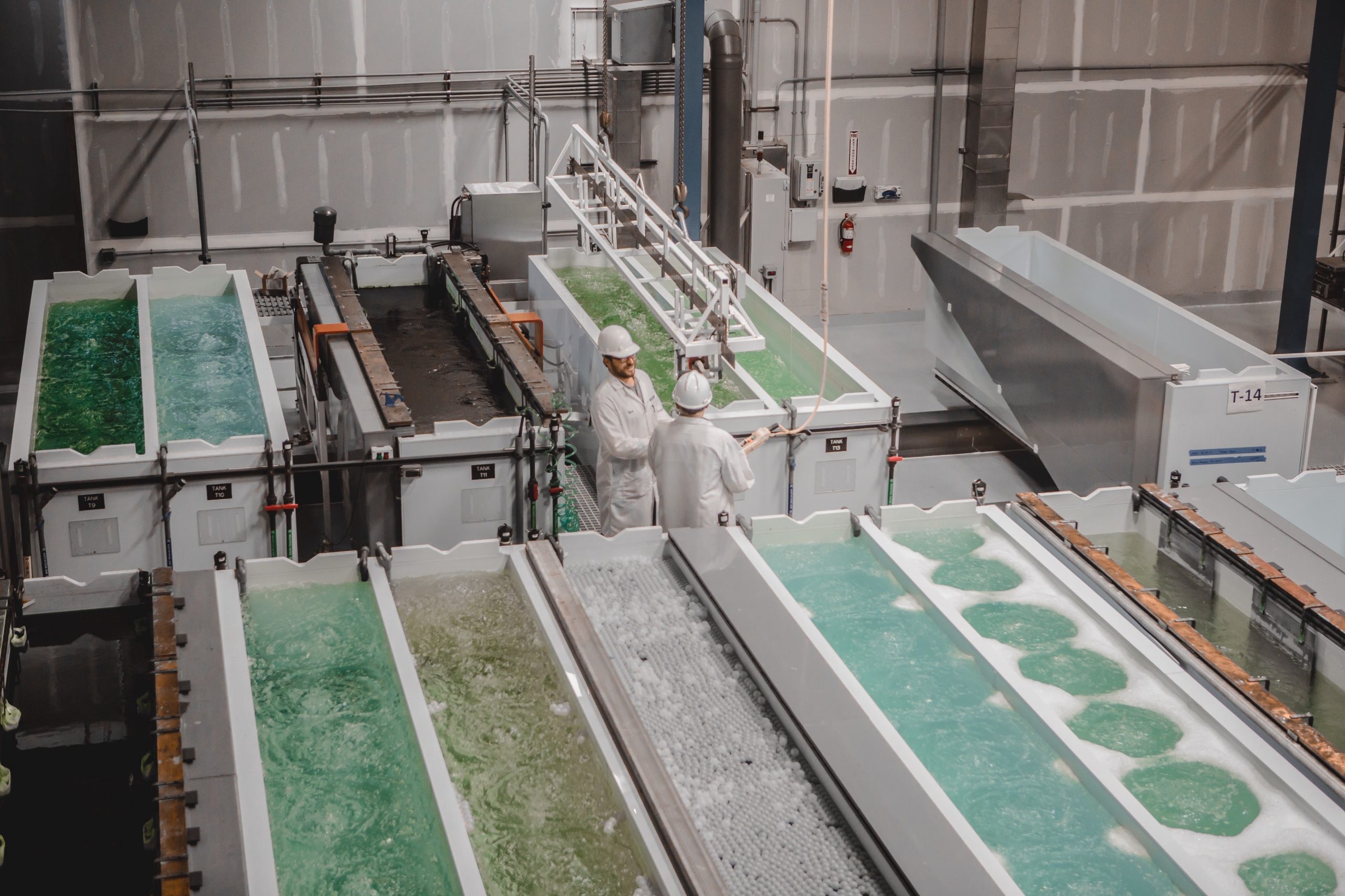

By Gwen Edwards, Managing Director of Golden Seeds
November 7, 2019
A lean organization with fewer than 50 employees, Modumetal has big goals: they’re working to redefine materials and processes in the centuries-old construction industry as well as in the oil and gas, automotive, aerospace and infrastructure industries. Of course, with lofty goals come serious challenges. Leading Modumetal through these challenges is Christina Lomasney, who describes herself as the “Co-founder, President, CEO, and sometimes janitor” of the Seattle-based company.
In this discussion with Gwen Edwards, Managing Director of Golden Seeds, Christina discusses the details of what Modumetal does, the wide-ranging challenges the company has faced, how it has risen to meet them, and what advice she has for other entrepreneurs.
CL: We started the company a little over 10 years ago to address the challenges associated with using building materials for construction that are over 100 years old. Interestingly, though, we were founded as a result of a product we developed to address the challenges in up-armoring Humvees in the lead up to the Iraq war in the 2005 timeframe.
Conventional steel, which is the material of choice due to cost and performance balance, were limited in their ability to deliver a ballistic performance that’s acceptable for that type of vehicle. So we started developing tech to address that problem. We came up with manufacturing technology and a class of materials that address that particular challenge, but also many of the problems plaguing the construction and transportation industries, such as being able to produce cars that are lighter, and infrastructure and buildings that last longer. We aim to deliver materials that can last much longer than those developed at the turn of the century.
The class of materials we use are known as nano laminated alloys. So they’re layered materials and layered metals, where the layers are on the scale of nanometers — they’re very thin plies stacked up to produce bulk materials or coatings that protect things from the environment and provide structural reinforcement, and do it in a much more efficient way than a conventional homogeneous steel, for example. That’s the first part of the breakthrough.
The second part of the breakthrough was a manufacturing process — which is actually very important when dealing with industrial markets — that was cost competitive with conventional pyro, or heat-based, processes.
We developed a manufacturing process based on electricity. We can produce metals near room temperature, and do it with direct input of electricity into the process. Basically, it’s an electro-chemical process — electricity and chemistry are combined to produce this unique class of materials. So, we make these nano layers at a cost that’s competitive with conventional metals.
This is really a major breakthrough. When you think about it, the materials of construction define not only economic innovation, but also social innovations: We reflect on periods in human evolution by their materials of construction — the Stone Age, the Bronze Age, the Iron Age, the Steel Age… and now the Logic Metal Age is afoot.
CL: The market need is really unique to each user of our product, and that’s one of the biggest challenges we faced early on. The tech can apply anywhere metals are used, and some places where they aren’t, so there are a lot of challenges we can solve — from light weighting vehicles, to producing engines that can run hotter, to being able to produce steel that can last longer in aggressive environments.
We recognize as an early stage company that it is not enough to say we have this tech that can apply everywhere, so we had to develop it for specific market needs.
We decided to focus on the corrosion of metals because it is very costly and affects a lot of major industrial users. In fact, it’s estimated to cost 4.1% of the gross domestic product of the U.S.! This is hundreds of billions of dollars in indirect costs every year addressing metals, and it is a multi-trillon-dollar problem globally.
We also focus specifically on the energy sector because corrosion directly correlates to economic performance.
We have a galvanizing technology, which is the most prevalent anti-corrosion system used in the world. It protects steel from the effects of corrosion, so we developed a nano-laminated galvanization, that we call NanoGal, that’s capable of out-performing traditional galvanization on the order of 30 times, at a cost that’s competitive with conventional galvanization. In oil and gas its used in nuts and bolts, and other types of connections, because those connections are both safety critical and single points of failure. So, it’s a cost issue as well as a safety issue created by corrosion.
Modumetal is unique because we deliver both increased performance and a tech that is competitive on cost.
The other unique thing is that we actually bring the tech to market through licenses, in addition to manufacturing it ourselves. We recognized that we’re competing against tech that has been around for a long time, that has a robust supply chain — especially in the energy sector. We recognize the likelihood of introducing tech to market that would easily displace that supply chain is unlikely, so we license it into the existing supply chain.
CL: The challenge is intrinsic in what we are trying to do: displace materials that have been in the market for almost a century. So, the challenges are associated with changing the status quo in industries that are very well developed, and for good reason. We’re selling into markets that are specification driven, markets that are commoditized, and markets that define what can be purchased and how it has to be made.
In the case of metal, the specificity applies to the composition of the metal and the exact manufacturing process. The reason for that is two fold: the industry is very mature, but also these are safety critical applications, so there is a strong need to constrain the market in its ability to purchase off brand products that don’t perform the same.
There’s little tolerance for innovation, and few processes that facilitate innovation, so the process to change a specification in an industrial market takes a long time. We actually benchmarked the industry and found that it takes on average 18 years to change a metal specification.
That is the biggest challenge we face: the length of time to get from recognizing that the product works to the point where we’re specified and customers can actually buy the product.
CL: We have been tracking our progress against achieving specification, and now that we have that, the next milestone is getting enough production capacity online. I’m happy to report that as of the fourth quarter last year, NanoGalv has been trademark specified by most major oil and gas companies.
We also recently announced a partnership with the trading arm of Toyota Tsusho’s U.S. Metals group — which is an $80 billion company — to build a facility to manufacture product for these energy sector applications, and beyond into construction and automotive.
CL: We’re still a work in progress, ourselves, of course, but I have learned that this — building a company, getting funding, and everything in between — is at times a very lonely process.
We’ve been through a whole slew of challenges, and there were times when external forces weren’t pointing toward success, but I always believed in our team and our tech. The challenges we have now are not the same from years ago, which is a sign we have continued to grow and succeed.
If you truly believe in what you’re doing, don’t ever give up. Some of the greatest successes in history have been achieved for no other reason than perseverance.
CL: Golden Seeds has been with us almost since the beginning; we have a long trajectory and relationship. Through Golden Seeds, we attracted a member for my board of directors, and we have close collaboration with investors through Golden Seeds.
We’ve had networks that have come and gone in the company, and we’ve been lucky that as we needed insight and input, the right people have rotated through our arc. Whether it’s been legal advice, R&D, or market advice, I’ve found more of those networks through Golden Seeds than any single group of people.
Learn about the work of Golden Seeds.